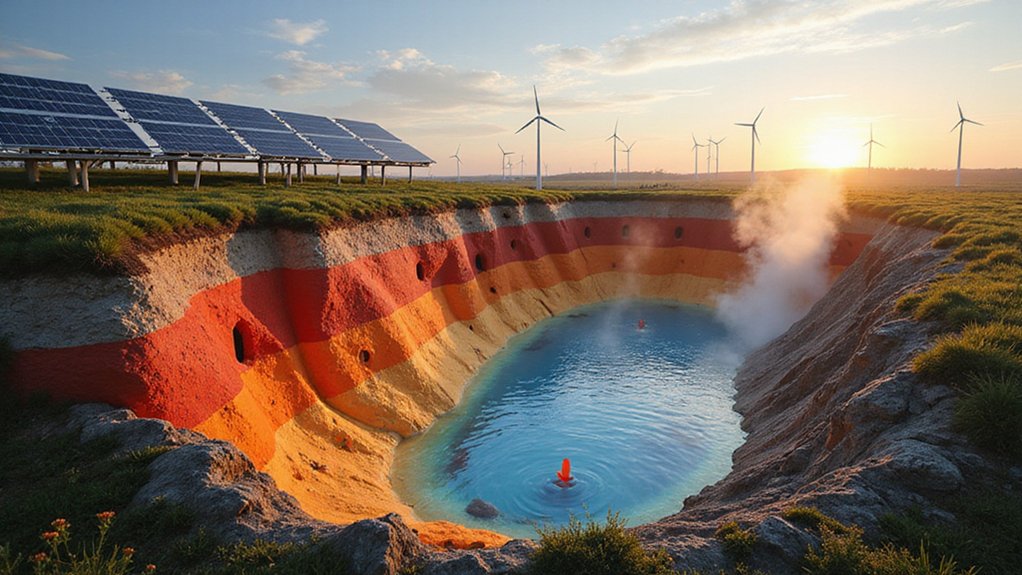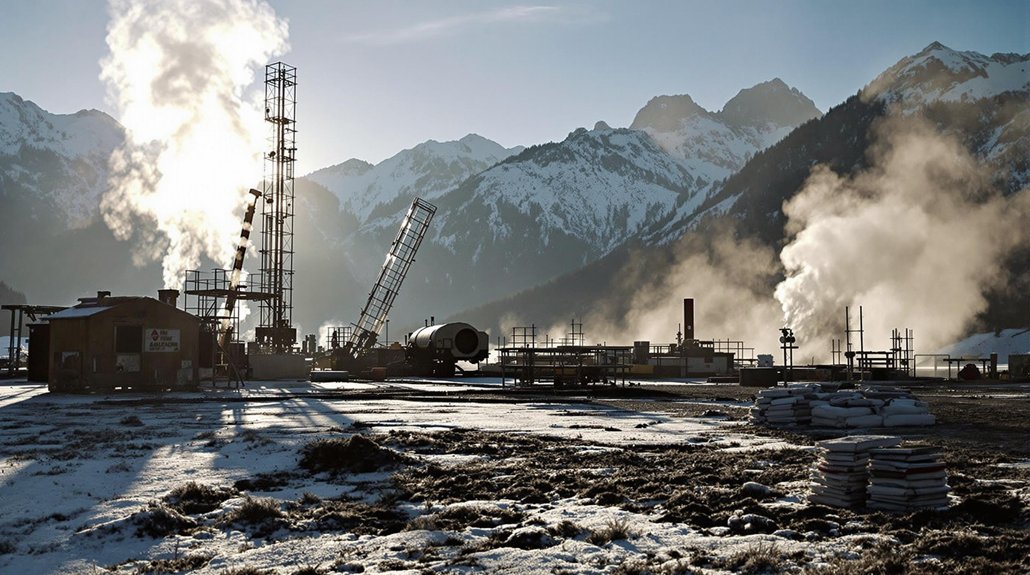While solar panels gleam in the sunshine and wind turbines slice through air, their energy often goes to waste. The biggest problem? Renewable power doesn’t show up when we need it most. Inconvenient, right? But scientists at Idaho National Laboratory (INL) think Earth itself could be our battery.
Underground heat storage isn’t exactly new technology. But it’s seriously underutilized. There are several types, each with its own quirks. Aquifer Thermal Energy Storage uses natural underground water layers. Borehole systems use arrays of fluid-filled holes. Cavern storage utilizes massive rock chambers. Enhanced Geothermal and Reservoir systems modify existing hot spots underground. Pick your poison—they all store heat.
The benefits are pretty compelling. Seasonal storage means summer sun can heat your home in winter. These systems hold enormous energy capacity for weeks or months. No more grid panic when clouds roll in. Plus, heat doesn’t leak away as quickly as electricity from batteries. Score one for thermodynamics. These technologies are particularly effective in temperate climate regions with distinct seasonal temperature variations.
Districts in Europe already use underground heat for warming entire neighborhoods. Industrial complexes store waste heat instead of venting it uselessly into the air. Large buildings precondition ventilation systems with it. It’s efficient. It’s logical. It’s happening right now.
Not everywhere works, though. You need the right rocks, the right depths, the right location. Drill in the wrong place and you’ve got an expensive hole producing nothing but headaches. Environmental concerns exist—nobody wants contaminated groundwater or mini-earthquakes. The growing market trend shows increasing collaboration between academia and industry to overcome these challenges.
The economics remain tricky. Upfront costs make accountants sweat. Regulatory hurdles can paralyze projects for years. Still, research continues at national labs across America. These solutions address the critical storage challenges that have limited renewable energy adoption. The DOE’s Geothermal Technologies Office keeps pouring funding into promising projects.
Underground heat storage won’t single-handedly solve our energy problems. But combined with other solutions, Earth’s hidden batteries might just help renewable energy finally grow up and become reliable. Sometimes the best solutions are right under our feet.
References
- https://www.ctc-n.org/technologies/underground-thermal-energy-storage
- http://large.stanford.edu/courses/2013/ph240/lim1/
- https://www.nrel.gov/news/detail/program/2023/nrel-led-team-explores-potential-of-underground-geothermal-energy-storage-for-all-seasons
- https://www.weforum.org/stories/2022/11/geothermal-renewable-energy-storage/
- https://www.thinkgeoenergy.com/storing-energy-underground-reservoir-thermal-energy-storage-shows-promise/








